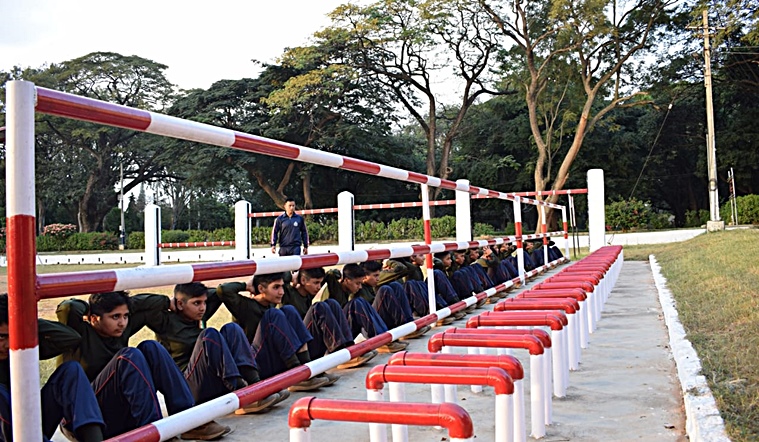 The underlying cost effectiveness premise of GOCO may prove true, but it is a fact that such a step will cause a grave injury to battle proven integrated repair and maintenance system of the Army. (Representational)
The underlying cost effectiveness premise of GOCO may prove true, but it is a fact that such a step will cause a grave injury to battle proven integrated repair and maintenance system of the Army. (Representational)
Written by Lt Gen Virin Dhir (retd)
It is no secret that over the years the Army modernisation plans have suffered for lack of allocations in the defence budget. Direct consequence of the same is that old equipment has to be recycled , and upgraded if possible.
In this process, Army Base Workshops (ABWs) play an important role by stripping and overhauling the equipment to give these a fresh lease of life. Further, ABWs form an important link in the integrated maintenance management of the weapon systems and equipment in the Army.
As part of Army reforms, a process has been set into motion for privatization of ABWs. Under the scheme, complete assets of ABWs, created diligently over the years, will be handed over to private entities. In the case of Base Workshop at Delhi, such a recommendation has emerged as a follow up to CAG observations pertaining to poor availability of spares and low efficiency of work force. Thus, the concept of GOCO (Government Owned Company Operated) is predicated on the sole premise of cost effectiveness.
Now, what is combat effectiveness – in simple terms it is a military combination of trained soldier and mission reliable weapon system.
A fighting unit is assessed for its combat readiness and effectiveness based on mission availability of its manpower and weapon systems. With great experience and thought, an integrated repair and maintenance system has been devised which ensures optimum availability of weapon systems with high mission reliability . The efficacy of this system has been battle proven during 1965 and 1971 wars and the Kargil Operation.
The art of war teaches us to rely not on the likelihood of the enemy’s not coming, but on our own readiness to receive him; our combat support system proved its worth in the tank battles of Khem Karan and Basantar and the sustained firing of Bofors guns during Kargil operation. So, the prevailing maintenance system is combat proven, though it may contain some cost inefficiencies.
The underlying cost effectiveness premise of GOCO may prove true, but it is a fact that such a step will cause a grave injury to battle proven integrated repair and maintenance system of the Army.
Flouting the military dictum of integration of resources can have serious repercussions impacting the fighting potential in a sustained conflict.
Late Lt Gen Hanut Singh, the doyen of Armoured Warfare stated, in a one to one meeting with the author, that the quality of integral maintenance support plays an important role in tank warfare.
Another aspect that needs consideration is that of fast changing military technologies. There is constant endeavor on part of arms manufacturers to come up with advanced weapon systems rendering old systems obsolete.
Maintaining such systems becomes a challenging task and perhaps less attractive to private maintenance agencies. These peculiar dynamics of sustaining military weapon systems in a state of operational readiness necessitate a robust inhouse capability of technology management and the capacity to overcome hurdles posed by manufacturers withdrawing from the scene.
In their effort to optimize defence expenditure, many countries which experimented with GOCO have met with mixed success.
In fact, United Kingdom has declared GOCO option as unsuccessful. Furthermore, our geographical dispositions, threat perceptions and military contingencies are quite different and vey challenging. It would be prudent for the Government and the Army to revisit the decision to privatize ABWs and instead seriously consider other options of strengthening the existing system.
Setting up a Special Purpose Vehicle with greater autonomy under the Army control could provide a workable alternative. Let the Army not be in haste to dispense with bastions of military technology and sacrifice combat effectiveness for cost effectiveness.
(Lt Gen Virin Dhir is the former Director General of EME, Army HQ.)